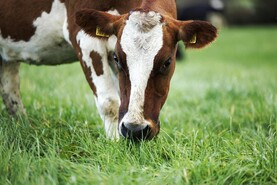Irish dairy herds are still modest in size by international standards, Professor of agriculture and food economics at UCD Michael Wallace has said.
Speaking on RTÉ’s Countrywide on Saturday morning in the context of emissions and meeting climate targets he said: “We’ve seen a degree of expansion in herd sizes above 100 cows but we still have predominately a modest herd size by international standards.
“In New Zealand, the average herd size is in excess of 400 cows and stocking rates would be much higher,” he said.
Stocking rates
He said while stocking rates in dairying have started to increase since quotas have been abolished, the average increase in stocking rate over the last 10 years has only been about 6%.
“By international standards we wouldn’t be described as particularly intensive there,” he said.
Prof Wallace said that he fears that sometimes in the media coverage there’s an adoption of a narrative which often relates to conditions outside Ireland and “don’t actually reflect the reality of farming as I know it”.
Nitrates
On the nitrates derogation, when asked if Irish farmers will have to reduce herd sizes by a certain percentage and whether it would tax farmers Prof Wallace said that the answer is no.
“If you think about the number of farmers, dry stock farmers, the typical stocking rate is often below 1.5LU/ha. Under the nitrates directive, it’s 2LU/ha.
“So the average beef or sheep unit is well below that, but it does bite for dairy farms.
“An efficiently managed dairy farm targeting high levels of grass utilisation, which they need to do for high levels of profitability, they’re going to try for higher stocking rates.
“You will find that for that category of farm there are more that are right up at the 170kg limit.
“For some of them there, there’s about 7,000 farms that are under [a nitrates] derogation,” he said.
Read more
Barriers to on-farm renewable energy need to be removed - Extinction Rebellion
Potential for farmers to power Dublin Bus
Irish dairy herds are still modest in size by international standards, Professor of agriculture and food economics at UCD Michael Wallace has said.
Speaking on RTÉ’s Countrywide on Saturday morning in the context of emissions and meeting climate targets he said: “We’ve seen a degree of expansion in herd sizes above 100 cows but we still have predominately a modest herd size by international standards.
“In New Zealand, the average herd size is in excess of 400 cows and stocking rates would be much higher,” he said.
Stocking rates
He said while stocking rates in dairying have started to increase since quotas have been abolished, the average increase in stocking rate over the last 10 years has only been about 6%.
“By international standards we wouldn’t be described as particularly intensive there,” he said.
Prof Wallace said that he fears that sometimes in the media coverage there’s an adoption of a narrative which often relates to conditions outside Ireland and “don’t actually reflect the reality of farming as I know it”.
Nitrates
On the nitrates derogation, when asked if Irish farmers will have to reduce herd sizes by a certain percentage and whether it would tax farmers Prof Wallace said that the answer is no.
“If you think about the number of farmers, dry stock farmers, the typical stocking rate is often below 1.5LU/ha. Under the nitrates directive, it’s 2LU/ha.
“So the average beef or sheep unit is well below that, but it does bite for dairy farms.
“An efficiently managed dairy farm targeting high levels of grass utilisation, which they need to do for high levels of profitability, they’re going to try for higher stocking rates.
“You will find that for that category of farm there are more that are right up at the 170kg limit.
“For some of them there, there’s about 7,000 farms that are under [a nitrates] derogation,” he said.
Read more
Barriers to on-farm renewable energy need to be removed - Extinction Rebellion
Potential for farmers to power Dublin Bus






 This is a subscriber-only article
This is a subscriber-only article











SHARING OPTIONS: